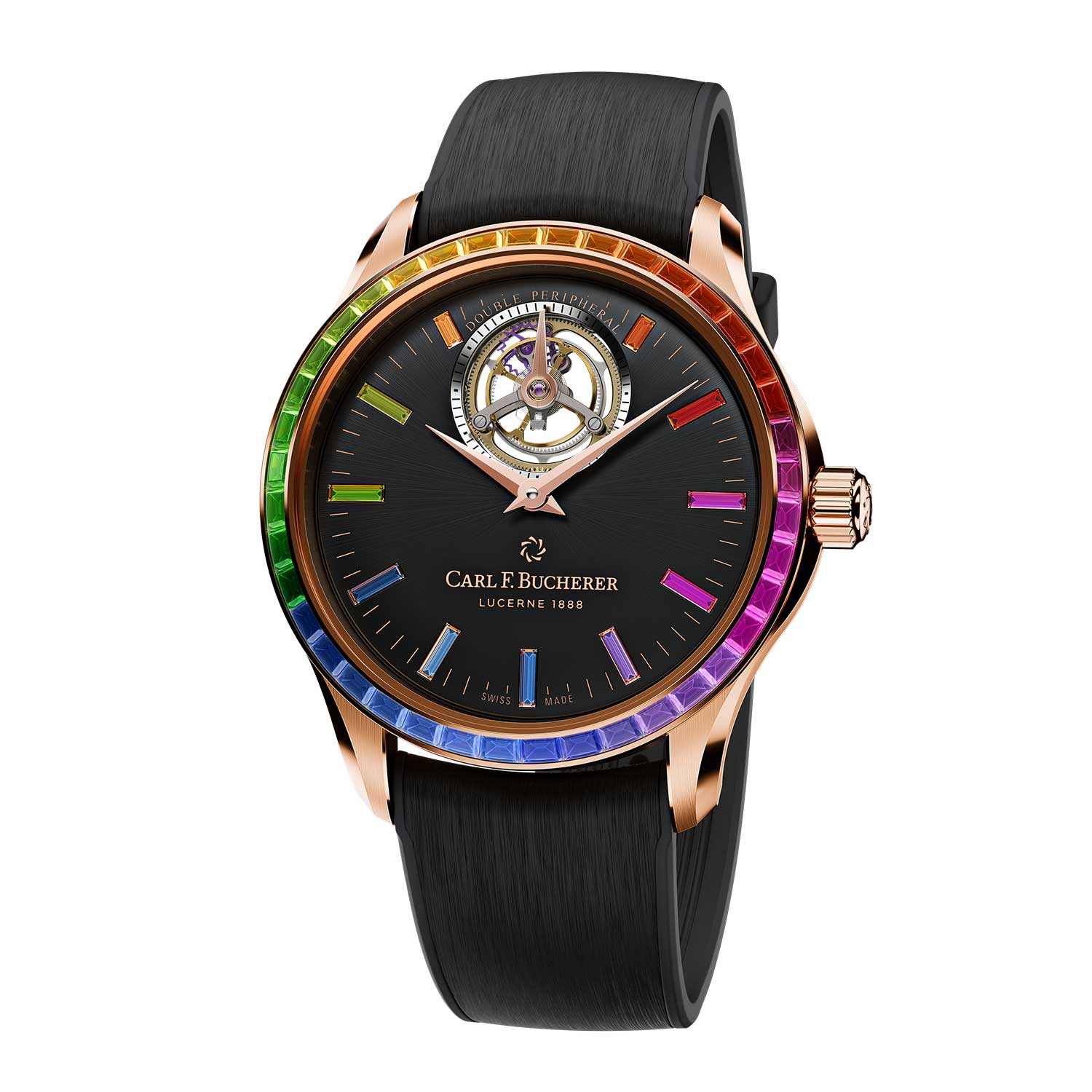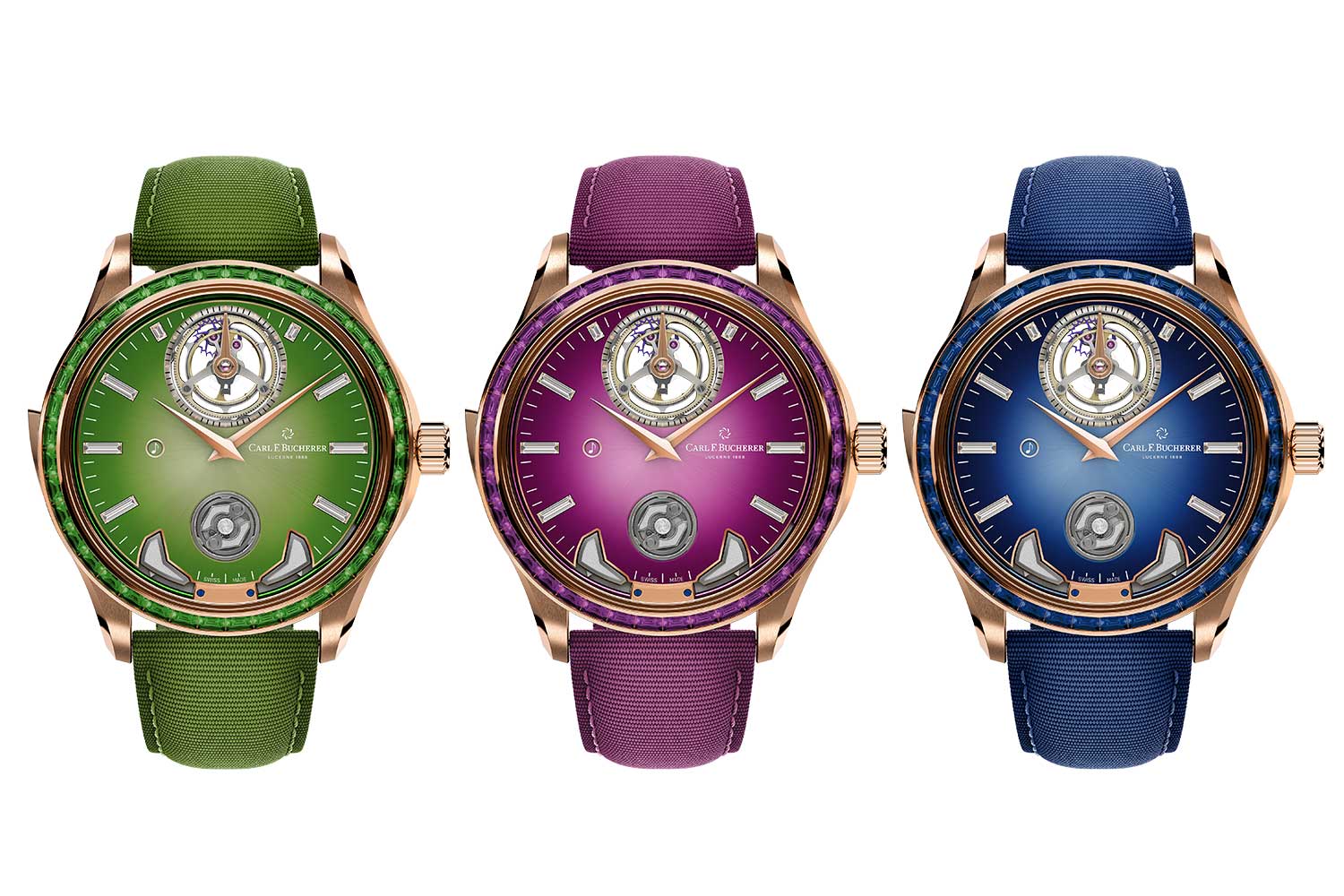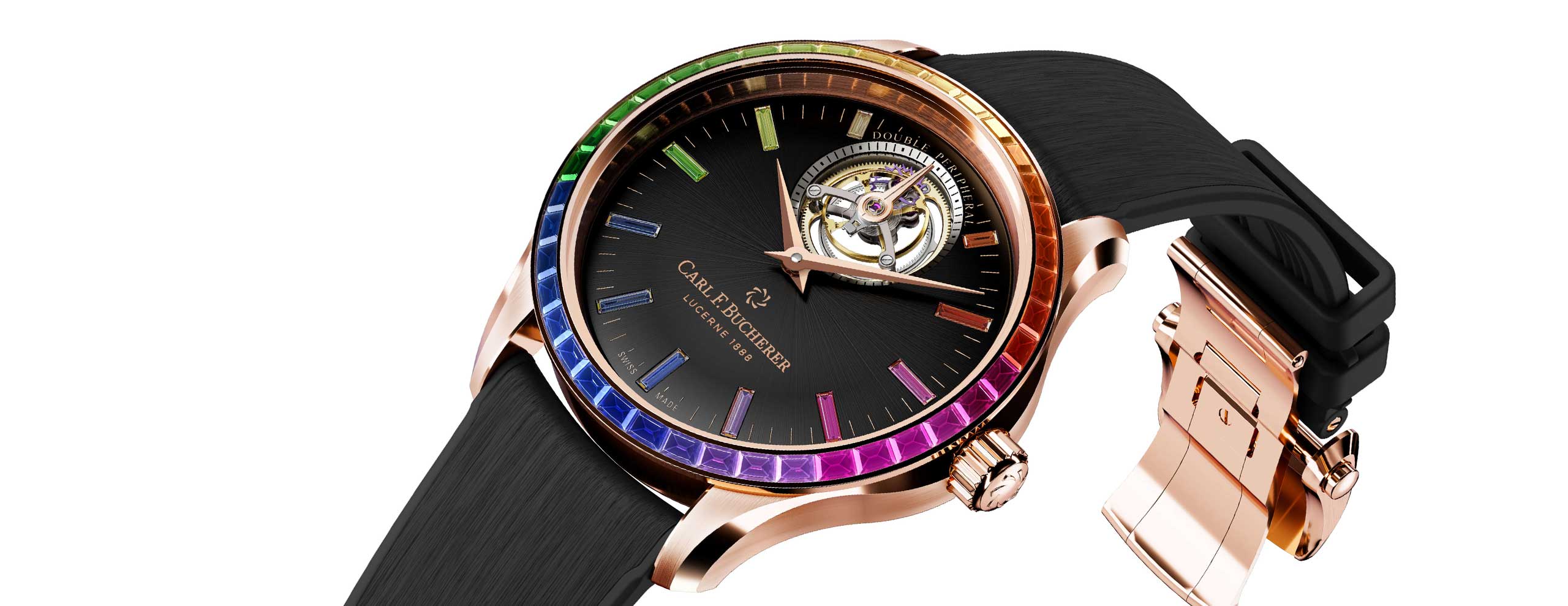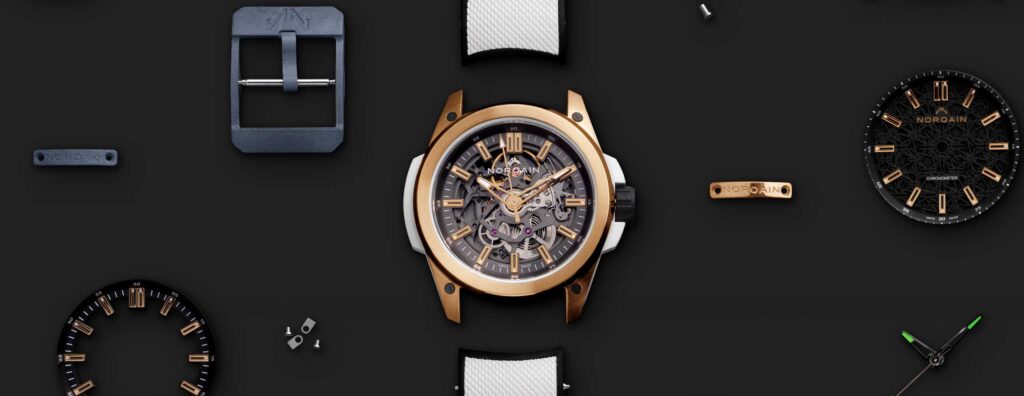Carl F. Bucherer’s in-house movements have long been a hidden gem in watchmaking. Here we explore their distinctive complications in greater detail.
Carl F. Bucherer’s in-house movements offer a truly unique perspective on classical watchmaking. They are both visually engaging and intellectually exciting, yet are far from being confrontationally unconventional. As a result, they tend to fly under the radar for most while earning esteem among those in the know. On a fundamental level, the design and engineering mandate for Carl F. Bucherer movements differ dramatically from all other brands. They are built upon a singular concept — peripheral winding technology — that originated with the caliber CFB A1000 in 2008.
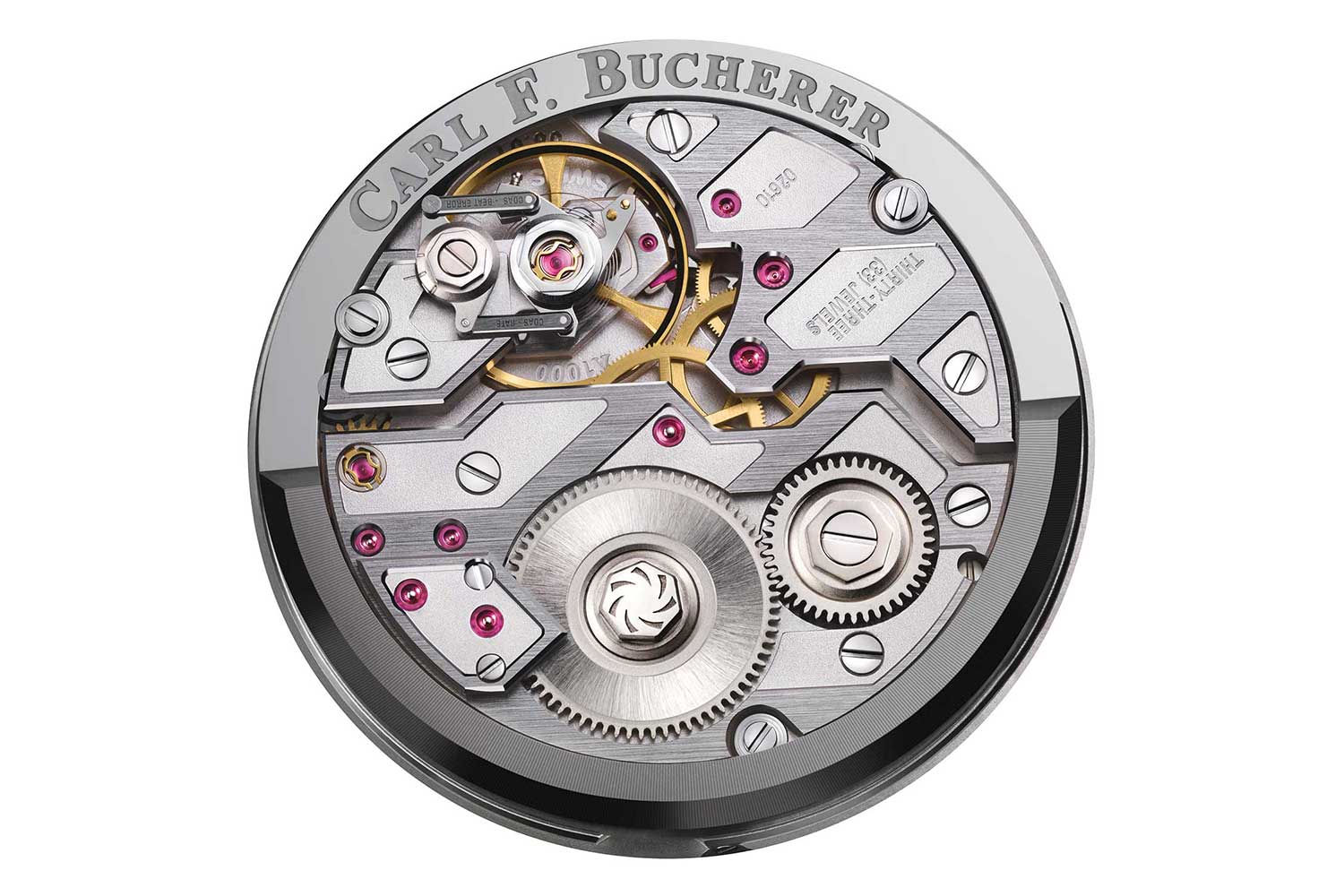
Caliber CFB A1000
Since the 60s, efforts to improve the functionality of the peripheral winding system had remained largely experimental. It wasn’t until Carl F. Bucherer introduced its CFB A1000 caliber that peripheral winding automatic movements were truly brought into series production. Peripheral winding systems provide distinct advantages including the suppression of thickness and increased visibility of the movement compared to a full rotor, along with greater freedom in bridge design than a micro-rotor.
The CFB A1000 was a truly original and technically intriguing starting point for the company’s movement development endeavors. Apart from having a peripheral winding mass, its success can be attributed to its sophisticated technical features that were designed to improve winding efficiency and shock resistance. Most notably, the peripheral winding mass is supported on three ceramic ball bearings to minimize friction, and the ball bearing races themselves are attached to an anti-shock system, a spring mechanism that permits slight sideways movement of the rotor, absorbing shocks in the process.
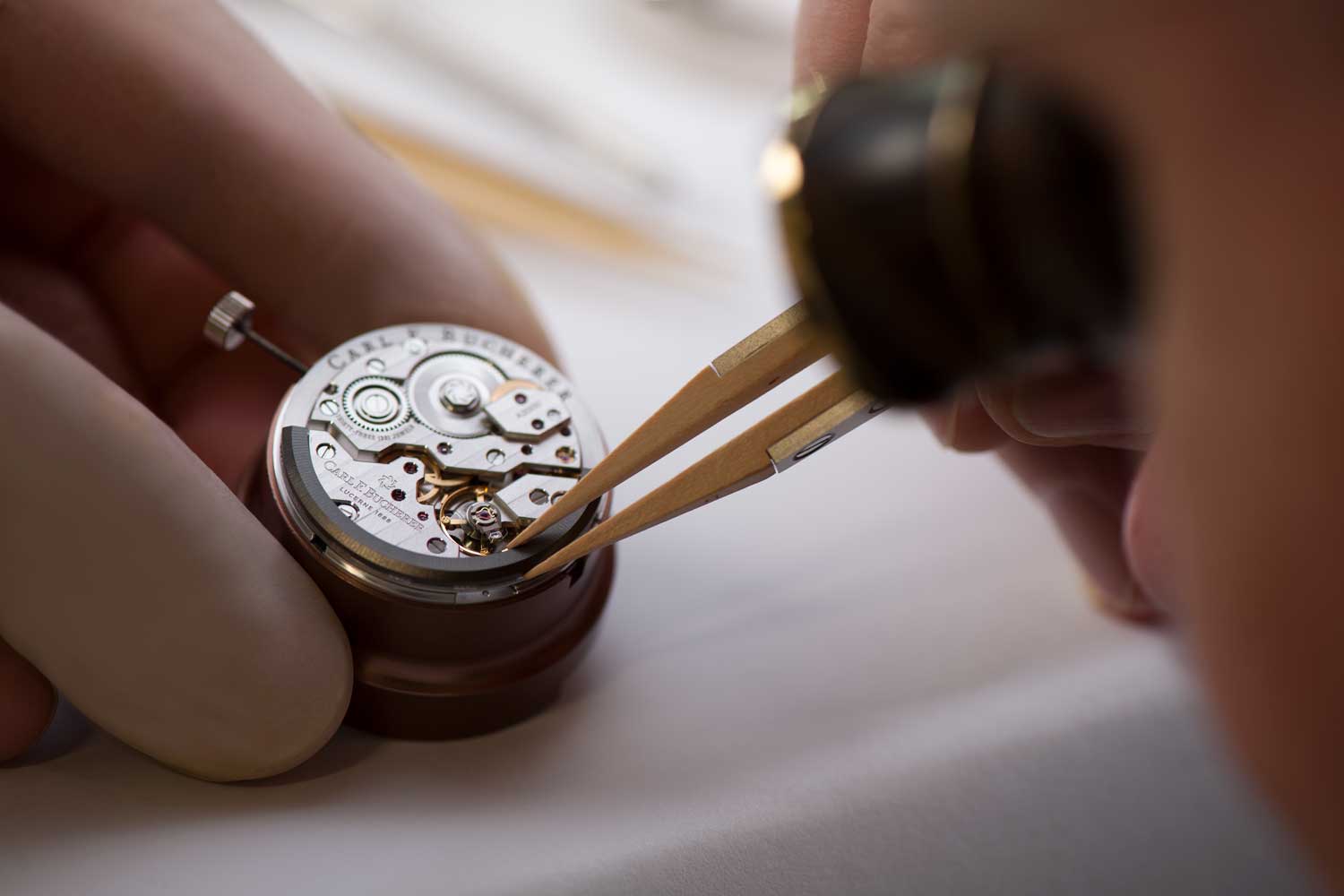
Assembly of the CFB A1000 movement
In the 15 years following the debut of the CFB A1000, peripheral technology has become integral to the mechanical identity of the brand. In 2016, Carl F. Bucherer introduced the CFB A2000 as the successor to the CFB A1000, which incorporates a free sprung balance with an increased frequency of 4Hz. Not only is the movement extremely reliable in its standard form, it has proven to be an excellent canvas for complications, including a big date and perpetual calendar. But more than that, the company also began designing complications around the concept of peripheral gearing, which has since yielded extremely unusual and surprising results.
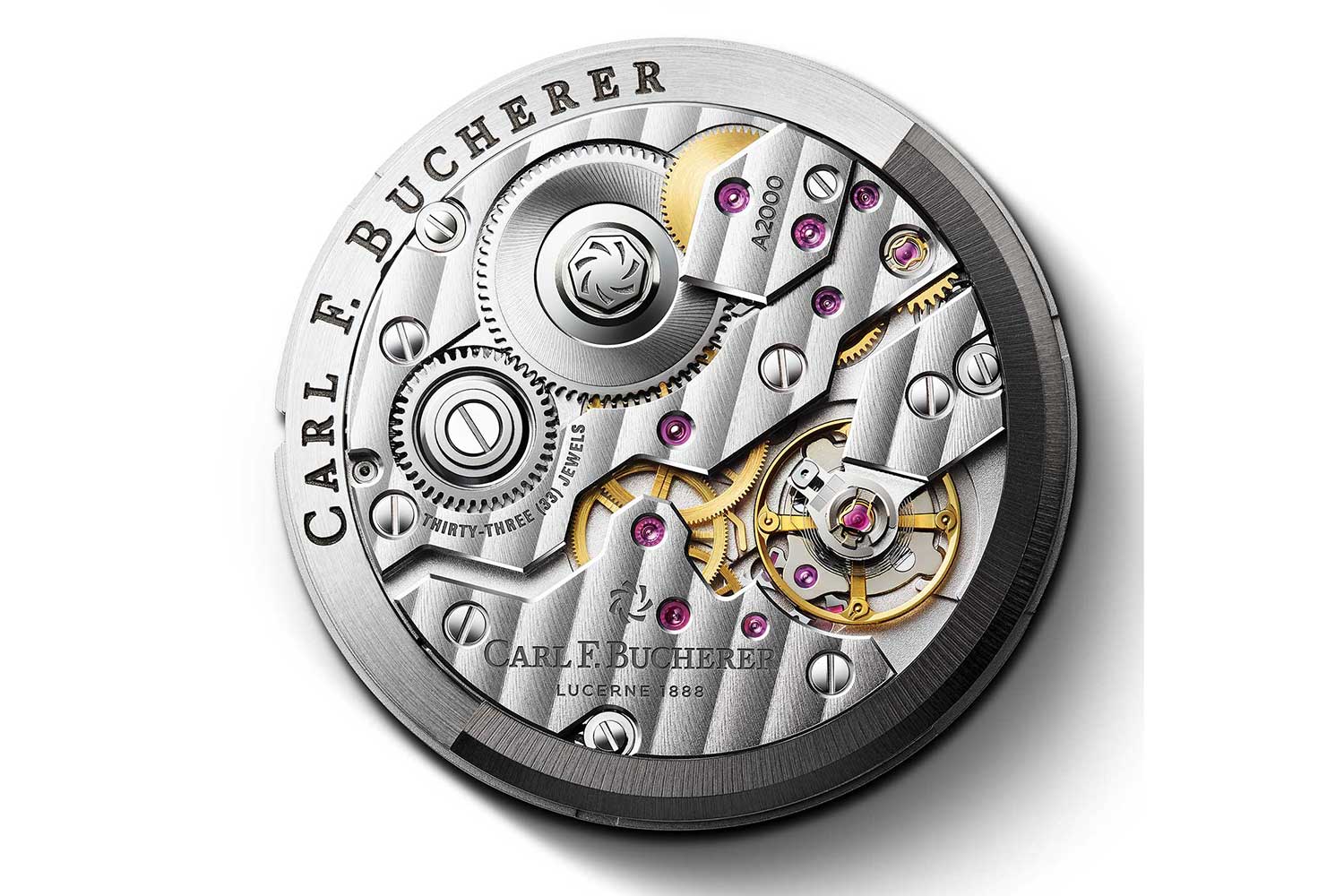
Caliber CFB A2000
According to chief technology officer Samir Merdanovic, Carl F. Bucherer currently produces the majority of movement components internally at its workshop in Lengnau, including wheels and pinions, while constantly working to expand its capabilities.
Manero Tourbillon Double Peripheral Caliber CFB T3000
The Tourbillon Double Peripheral caliber CFB T3000 was introduced to mark the brand’s 130th anniversary in 2018. It remains today one of the most unusual tourbillon movements on the market. While technically advanced watchmaking often comes with extravagant, forward-looking designs, the Manero Tourbillon Double Peripheral doesn’t overtly display its inventiveness. Instead, it’s one of those watches that reveals itself slowly. Purely by virtue of its cage construction, it is the most visually airy tourbillon on the market that does not rely on novel materials like transparent sapphire.
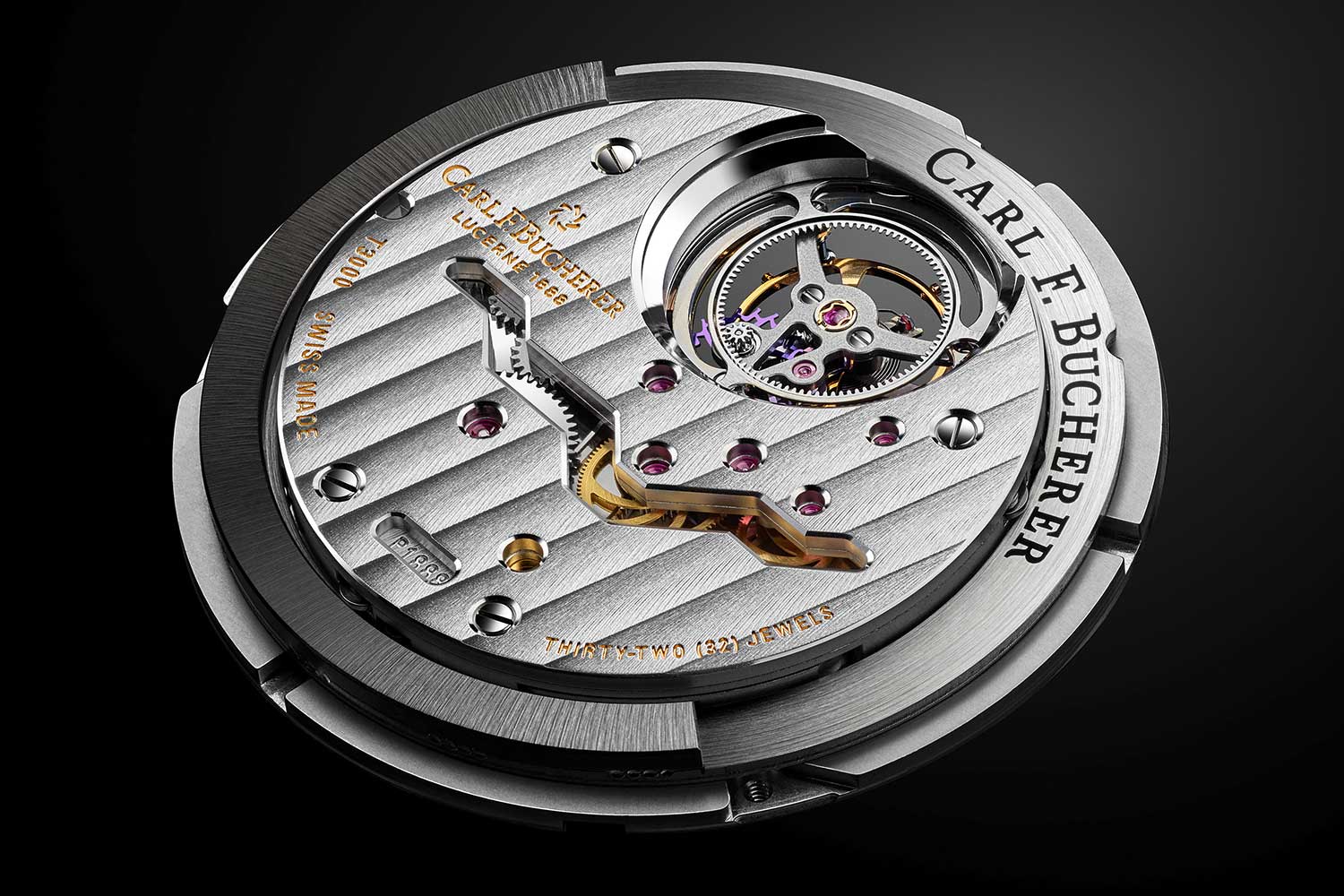
Caliber CFB T3000
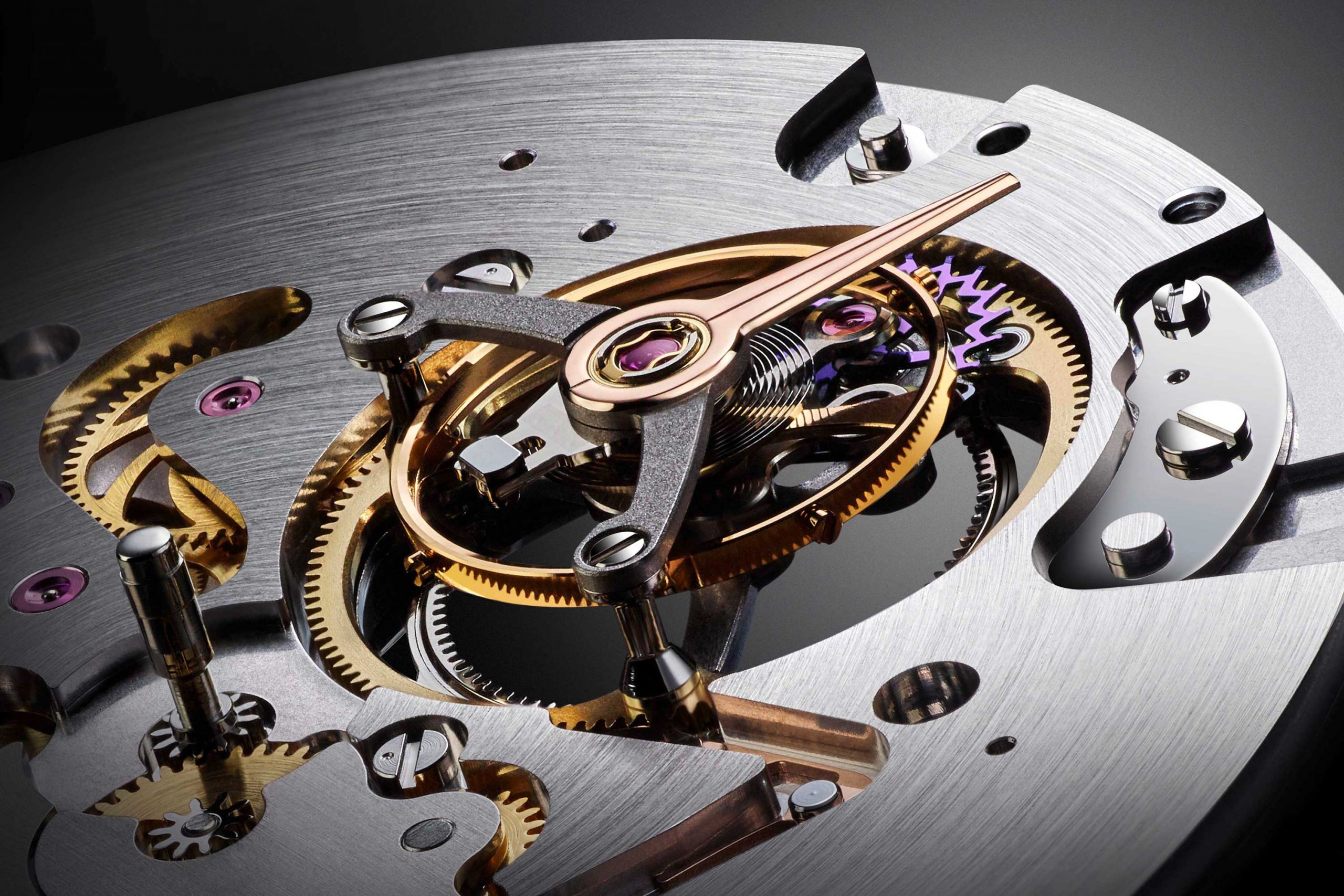
A close look at the tourbillon mechanism of the Carl F. Bucherer in-house made Tourbillon movement CFB T3000 calibre
Instead, its airy and open quality is achieved with a three-pronged approach. Typically, the last wheel of the going train in a tourbillon watch drives the cage via a pinion beneath the cage, which results in a thicker movement and an overlap in the visual presentation of the tourbillon, causing it to appear less distinct. However, in the CFB T3000, the cage itself consists of a toothed wheel that is driven on its periphery by the last gear of the going train. This is a more compact way to drive the rotation of the tourbillon, resulting in a slimmer movement as well as an airy construction. While this technique is commonly employed in ultra slim tourbillon movements, the CFB T3000 goes even further. The cage is supported by three ceramic ball bearings on its periphery, which eliminates the need for both an upper and lower bridge. Additionally, the fixed tourbillon wheel is designed with internal teeth rather than external, making it spokeless. Collectively, these elements contribute to an ultra slim and supremely airy tourbillon design, which is made all the more unusual in the context of automatic tourbillon movements. The movement measures just 4.6mm thin and has a seconds hand mounted on the cage, along with a stop seconds function. The benefit of having a toothed wheel integrated in the cage is that the cage can be stopped reliably using a straightforward brake lever, which halts the wheel without having to interfere with the cage pillars.

Carl F. Bucherer's Floating Tourbillon with silicon escapement to minimise inertia. The cage itself consists of a toothed wheel that is driven by a wheel on its periphery
As with the CFB A2000, the peripheral rotor is made of tungsten and is supported on ceramic ball bearings with integrated anti-shock mechanisms. The first wheel in the automatic gear train is also fitted with an Incabloc shock absorber. But ultimately the main draw is that despite its numerous intriguing and unconventional solutions, the Manero Tourbillon Double Peripheral has all the somber dignity of classical watchmaking. The ball bearings and anti-shock systems are entirely concealed, leaving you unaware of what you’re observing, save for the strikingly airy tourbillon at 12 o’clock. The movement offers a power reserve of 65 hours and has a frequency of 3Hz.
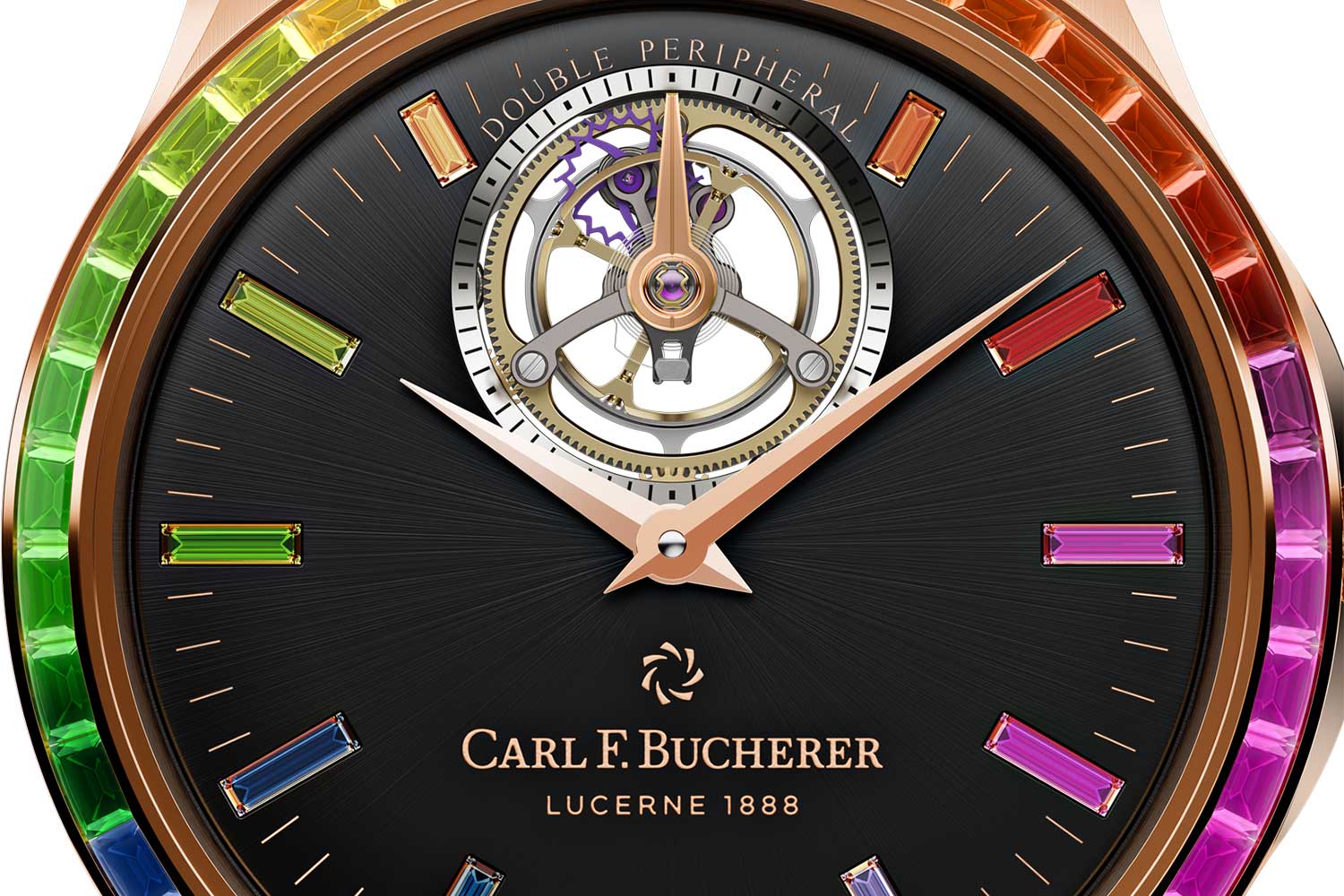
Manero Tourbillon Double Peripheral Paradise
While the CFB T3000 on its own could have set any iteration of the watch apart, the limited edition Manero Tourbillon Double Peripheral Paradise launched this year presents an irresistible pairing where the sophisticated movement is met with exuberantly colorful gem-setting.
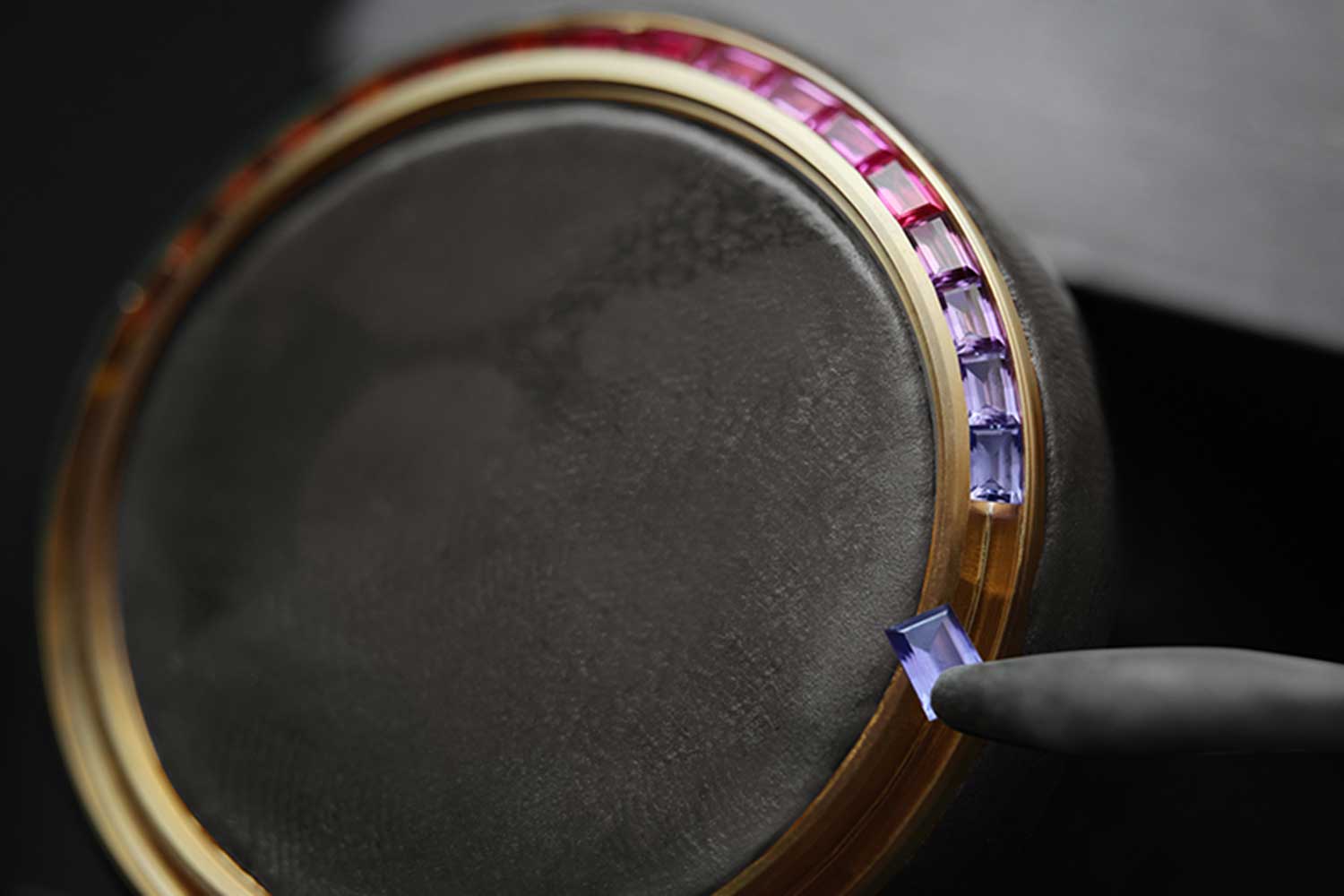
The bezel is carefully set with 40 perfectly matched baguette-cut gemstones that graduate in hue to mimic the color spectrum
Manero Minute Repeater Triple Peripheral Caliber CFB MR3000
Central to Carl F. Bucherer’s approach to watchmaking is a long-term vision which not only includes building base movements that can accommodate a range of complications, but also complicated movements that can be further expanded upon. The caliber MR3000 in the Manero Minute Repeater Triple Peripheral launched in 2021 was a development from the caliber CFB T3000. It incorporates a peripheral winding system, a peripherally driven and mounted stop seconds tourbillon at 12 o’clock as well as a minute repeating mechanism with a peripherally mounted regulator.
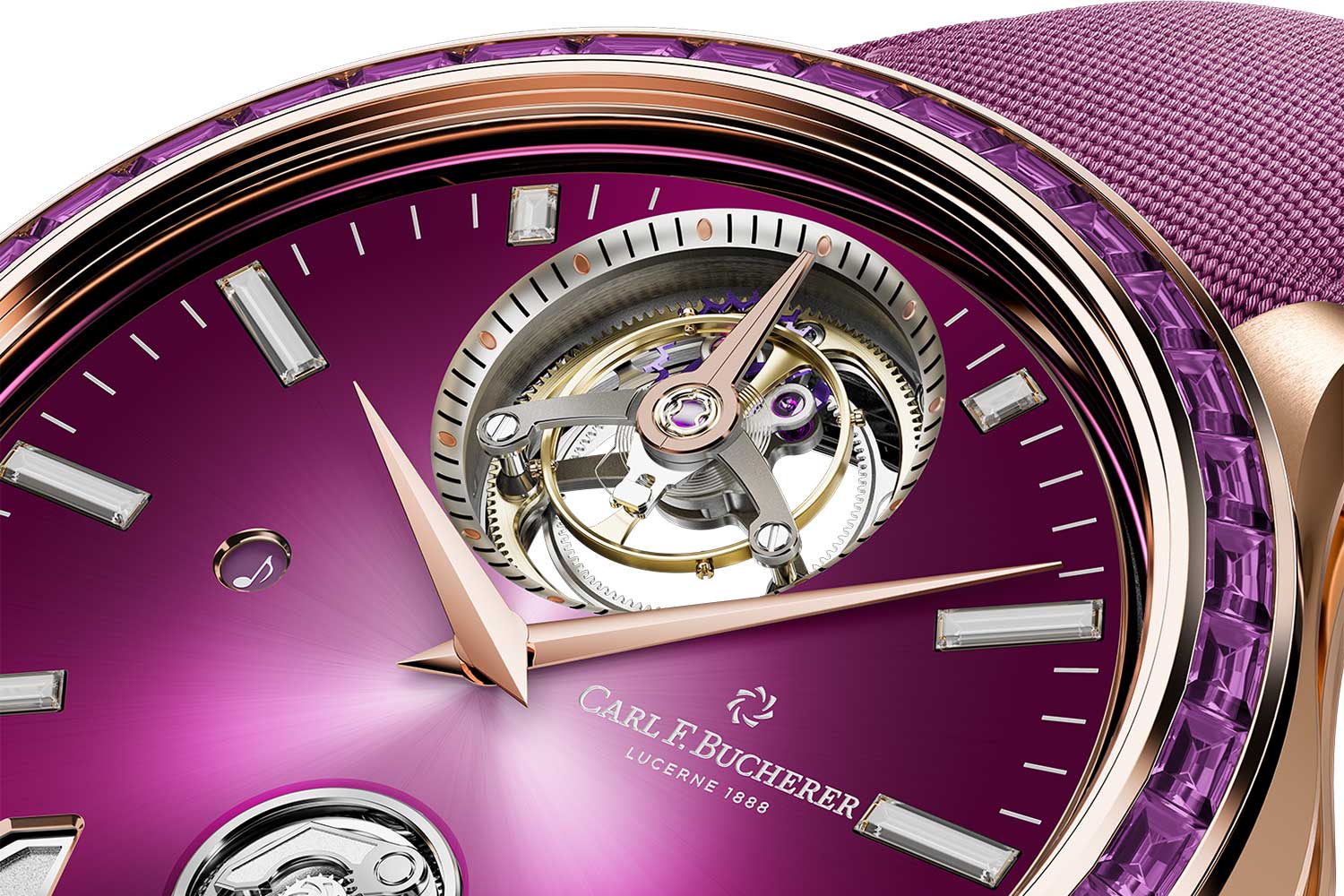
The Manero Minute Repeater Anniversary with a purple fumé dial and a bezel set with 40 baguette-cut amethysts
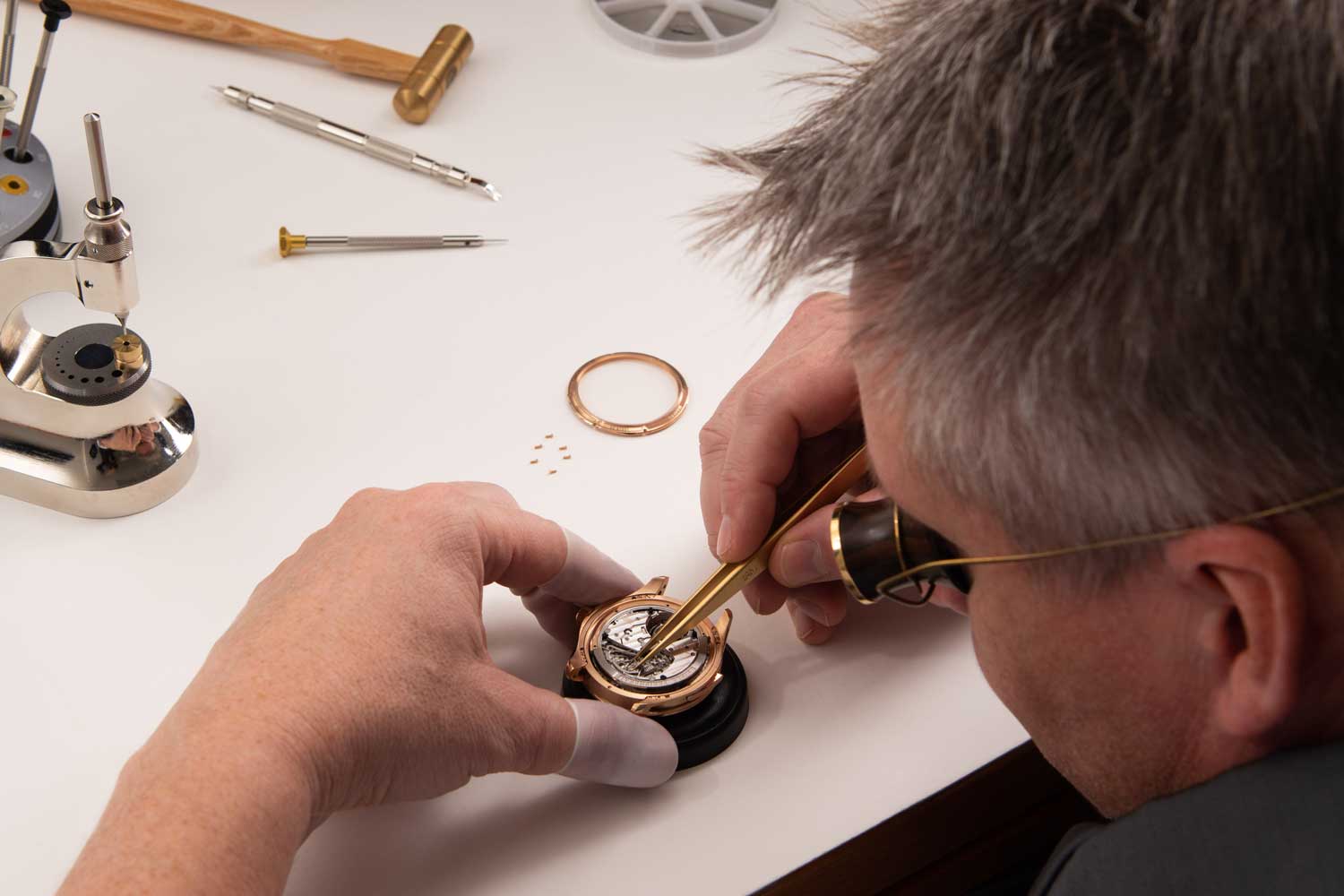
A Carl F. Bucherer watchmaker working on the Manero Minute Repeater Symphony at the brand's Lucerne manufacture.
Typically, the strike works comprising of snails, racks and levers in a minute repeater are built on the dial side of the movement, so that the quarter snail and minute snail can be attached to the cannon pinion and the hour star wheel can be driven directly by the cannon pinion. As they are positioned on the dial side, they’re usually hidden by the dial, and the only observable activity is of the hammers striking the gongs on the movement’s bridge side.
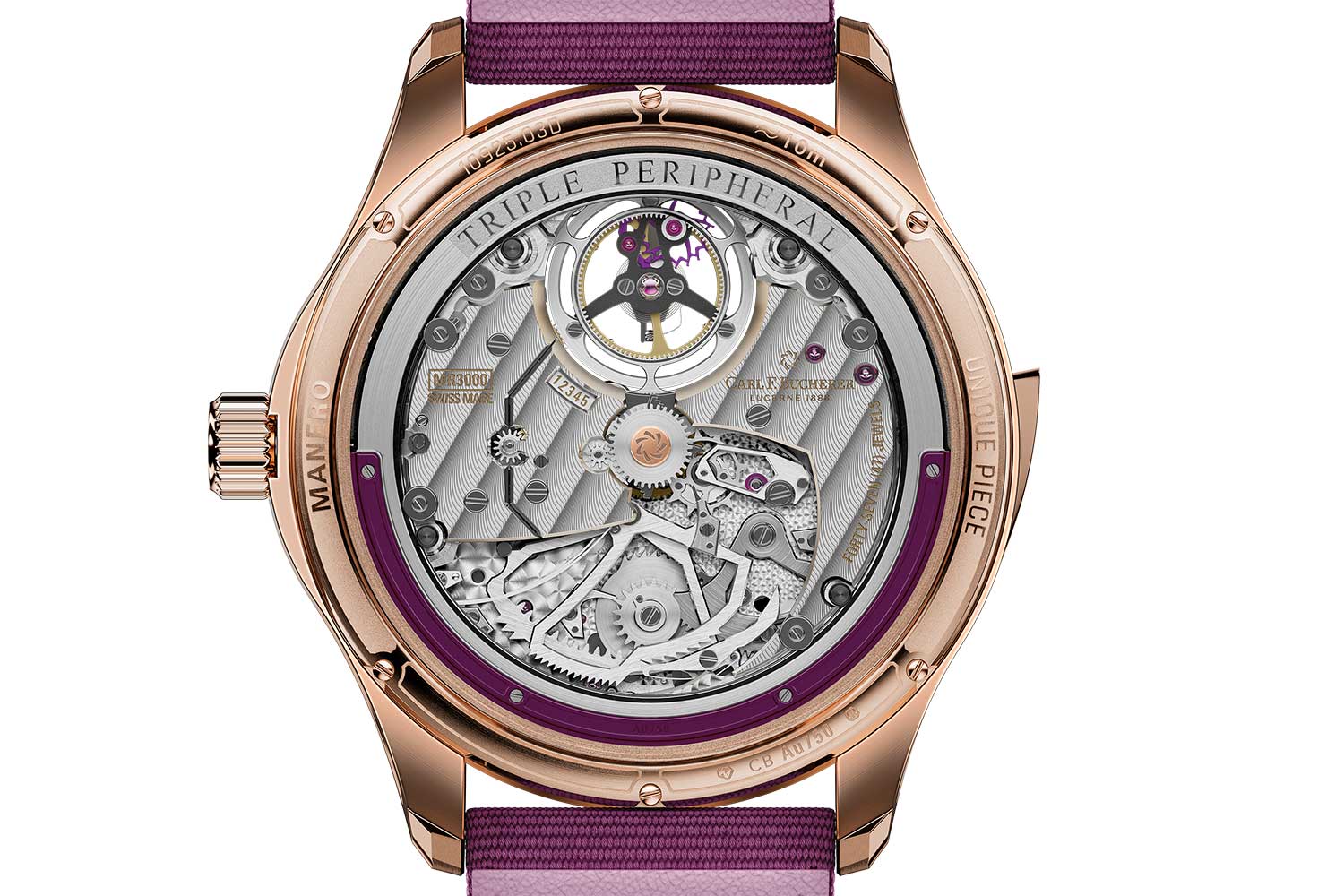
Calibre CFB MR3000
However, in the caliber CFB MR3000, the strike train is built on the bridge side of the movement, which thanks to the use of a peripheral winding mechanism, is completely exposed. To do this, the motion works had to be reconfigured to the bridge side. In a conventional watch, the cannon pinion to which the minute hand is attached is friction fitted to the center wheel shaft on the dial side. It drives the minute wheel that carries the minute pinion, which in turn drives the hour wheel mounted on the cannon pinion. However, in this case, the motion works are visible on the bridge side of the movement and the cannon pinion had to be elongated. The cannon pinion, which turns once per hour, governs the rotation of the repeater snails on their axes. Visible next to the hour wheel is a 12-toothed star wheel mounted on the hour snail that is indexed by the cannon pinion every hour. When the repeater is activated via a slide at the side of the case, the racks fall on the step of their respective snails and the watch chimes the time.
Also visible on the bridge side at six o’clock is the minute repeating barrel which is wound by a rack when the slide is pushed. The speed at which the gongs are struck is controlled by a gear train powered by this repeater barrel and at the end of the gear train is a regulator, visible through an aperture on the dial. The regulator reduces the unwinding rate of the mainspring by means of providing inertial resistance. It has two curved arms that are weighted at their tips, and as it rotates the arms extend outwards against the force of a spring, increasing inertia and thereby setting the tempo of the chimes.
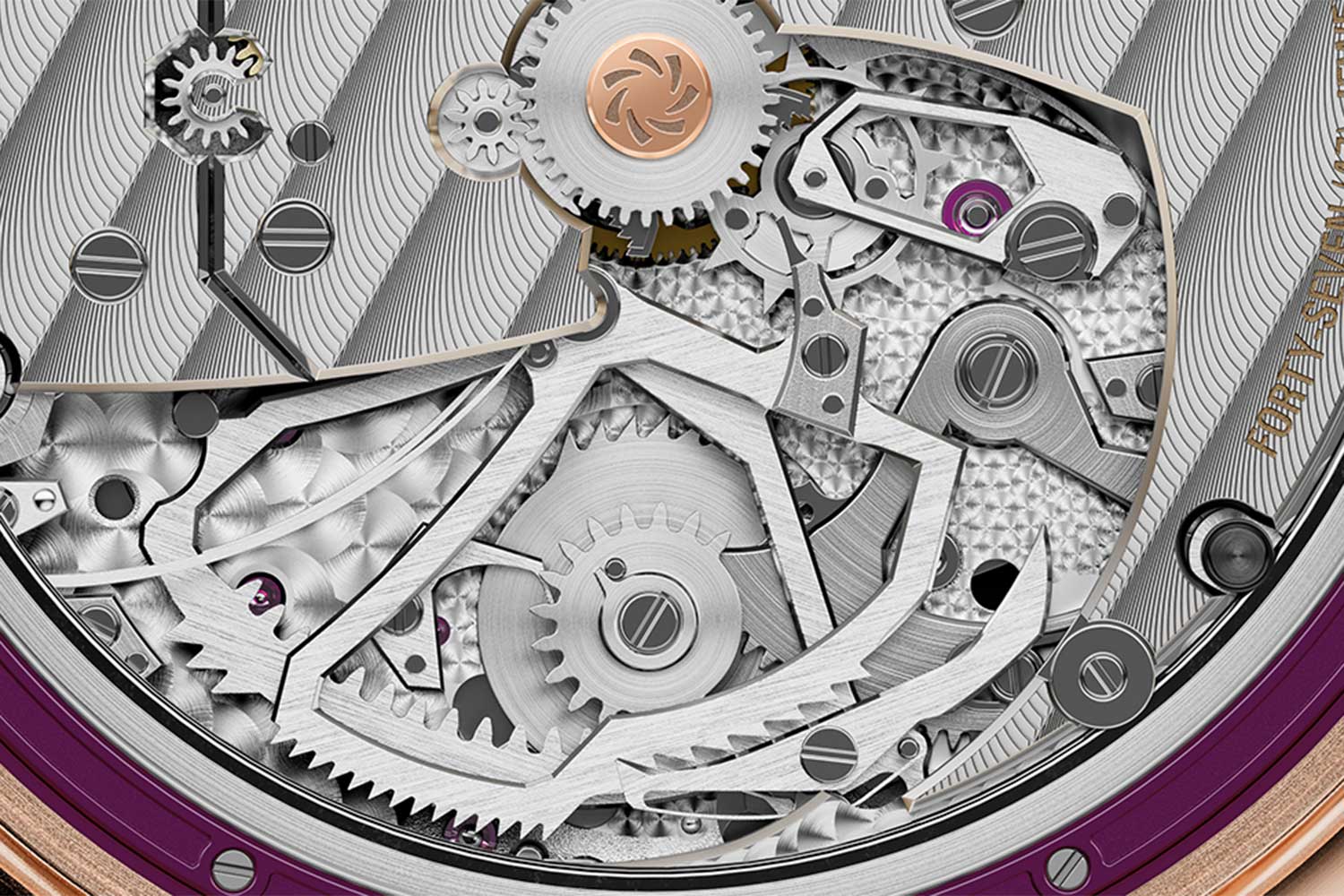
A closer look at the strike works, with the repeater barrel at six o'clock
Notably, the regulator has a highly compact design for which a patent was granted. A standard regulator requires a jeweled bearing on the top and bottom, which adds height. In the MR3000, the regulator is not mounted on a shaft but instead supported by three ball bearings along its periphery, as with the tourbillon.
The hammers can be seen at both the five and seven o’clock positions on the dial, creating a balanced and symmetrical arrangement that is deceptively uncomplicated. However, achieving this display of the innovative peripherally mounted tourbillon and regulator required more than a touch of mechanical magic behind the scenes.
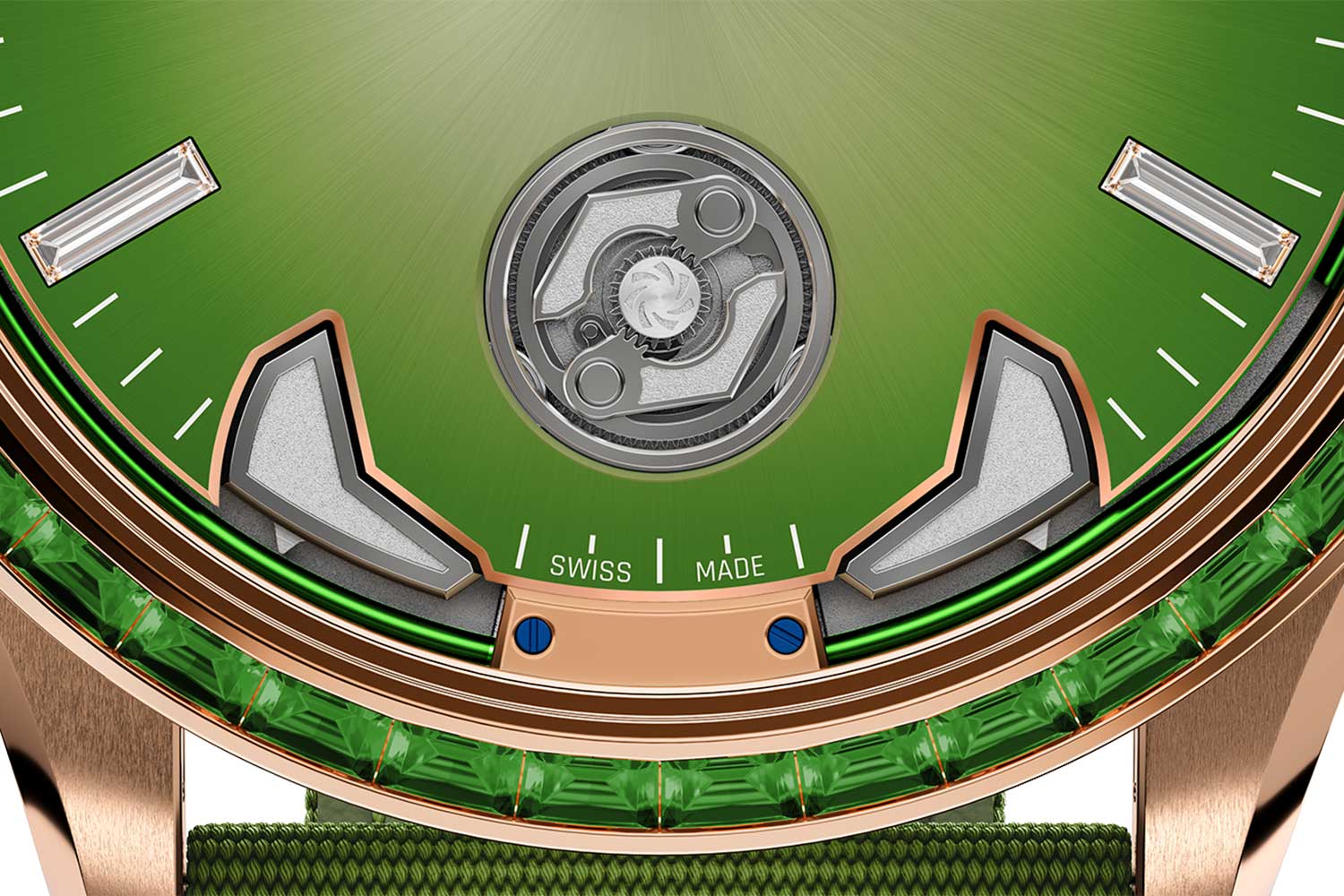
Visible on the dial are the peripherally mounted regulator and the hammers
The MR3000 boasts a slim height of only 8.59mm and, when encased, a modest 12.47mm. It is an outstanding piece of engineering that is likewise enough to make any version of the watch exceptional, yet the trio of unique pieces launched recently to mark the brand’s 135th anniversary this year really makes the journey across the finish line. The ingenious movement is accompanied with fumé dials and gem-set bezels.
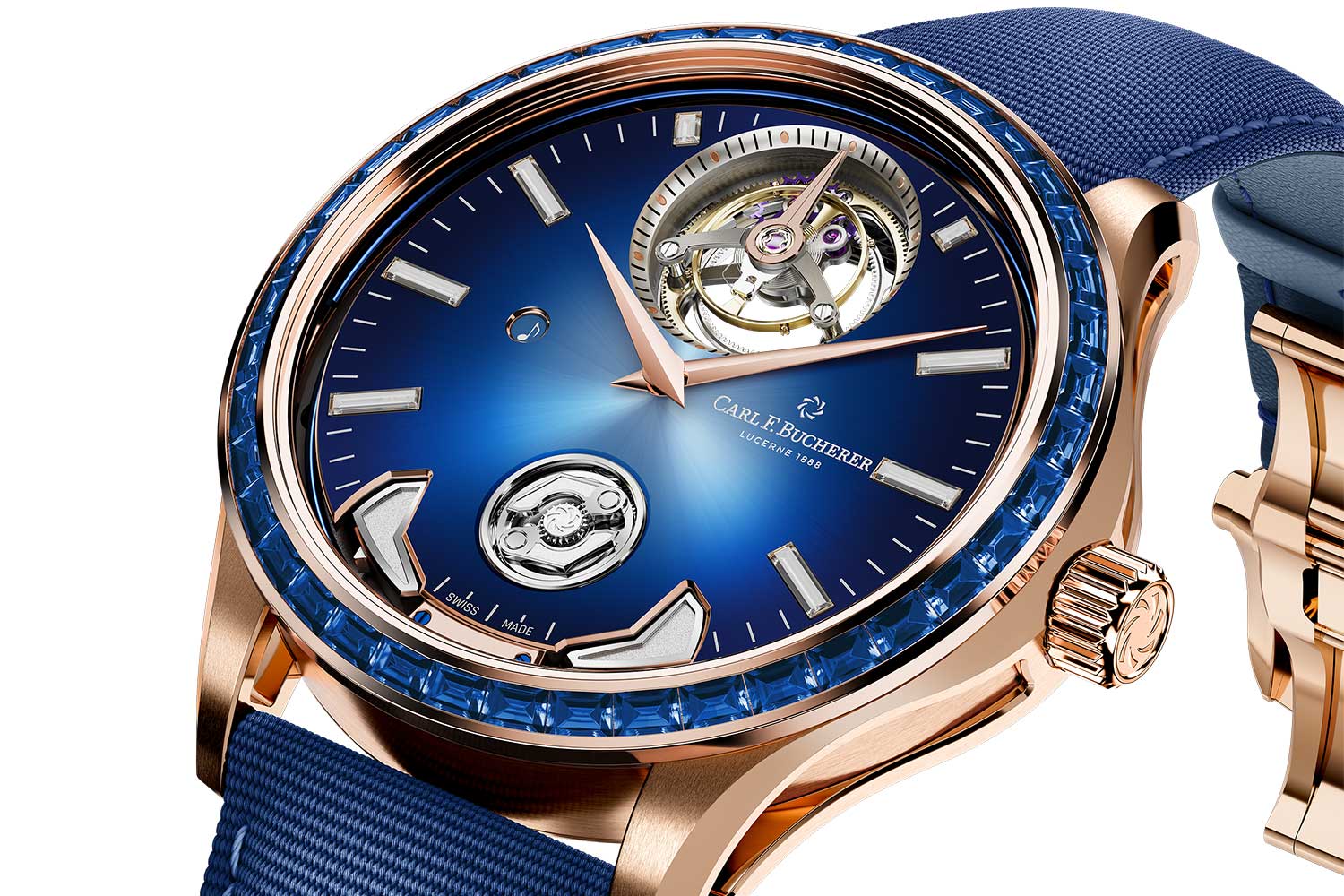
Manero Minute Repeater Anniversary with a blue fumé dial set with diamond indexes and a bezel adorned with 40 baguette-cut blue sapphires
Each of the three models combines a rose gold case with a fumé dial – available in green, blue, and purple—showcasing baguette diamond markers. Additionally, each model features a bezel adorned with tsavorites, blue sapphires, and amethysts, respectively.
Witnessing such a robust technical character in a watch with the pop and dazzle that comes with gem-set bezels is an intriguing fusion that somewhat makes its technical sophistication even more subtle in a satisfying way, rewarding, in time, those who come a little closer and delve a little deeper.
Carl F. Bucherer Manero Tourbillon Double Peripheral Paradise
Reference: 00.10928.03.39.11
Movement: Self-winding caliber CFB T3000; 65-hour power reserve
Functions: Hours, minutes, small seconds and flying tourbillon
Case: 43.1mm; 18K rose gold, bezel set with 40 baguette-cut tsavorites, sapphires and rubies in rainbow colors; water resistant to 30m
Dial: Black sunray with 11 baguette-cut tsavorites, sapphires and rubies in rainbow colors
Strap: Black hybrid brushed texture rubber; rose gold pin lock folding clasp
Price: USD 158,500
Availability: Limited edition of 18 pieces
Carl F. Bucherer Manero Minute Repeater Anniversary
Reference: 00.10925.03.54.11
Movement: Self-winding caliber CFB MR3000; 65-hour power reserve
Functions: Hours, minutes, small seconds, floating tourbillon and minute repeater
Case: 43.8mm; 18K rose gold; bezel set with 40 baguette-cut blue sapphires; water resistant to 10m
Dial: 18K rose gold with blue dégradé finish and eight baguette-cut diamonds
Strap: Blue textile strap with quick-release system; 18K rose gold pin lock folding clasp
Price: Upon request
Availability: Pièce unique
Reference: 00.10925.03.94.11
Movement: Self-winding caliber CFB MR3000; 65-hour power reserve
Functions: Hours, minutes, small seconds, floating tourbillon and minute repeater
Case: 43.8mm; 18K rose gold, bezel set with 40 baguette-cut tsavorites; water resistant to 10m
Dial: 18K rose gold with green dégradé finish and eight baguette-cut diamonds
Strap: Green textile strap with quick-release system; 18K rose gold pin lock folding clasp
Price: Upon request
Availability: Pièce unique
Reference: 00.10925.03.94.12
Movement: Self-winding caliber CFB MR3000; 65-hour power reserve
Functions: Hours, minutes, small seconds, floating tourbillon and minute repeater
Case: 43.8mm; 18K rose gold; bezel set with 40 baguette-cut amethysts; water resistant to 10m
Dial: 18K rose gold with purple dégradé finish and eight baguette-cut diamonds
Strap: Purple textile strap with quick-release system; 18K rose gold pin lock folding clasp
Price: Upon request
Availability: Pièce unique














